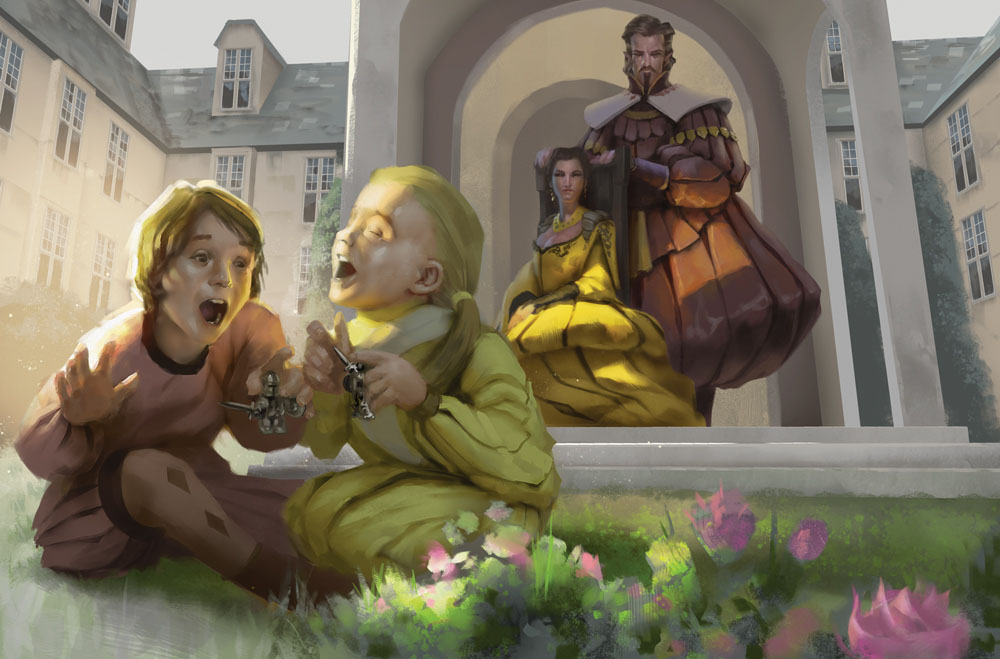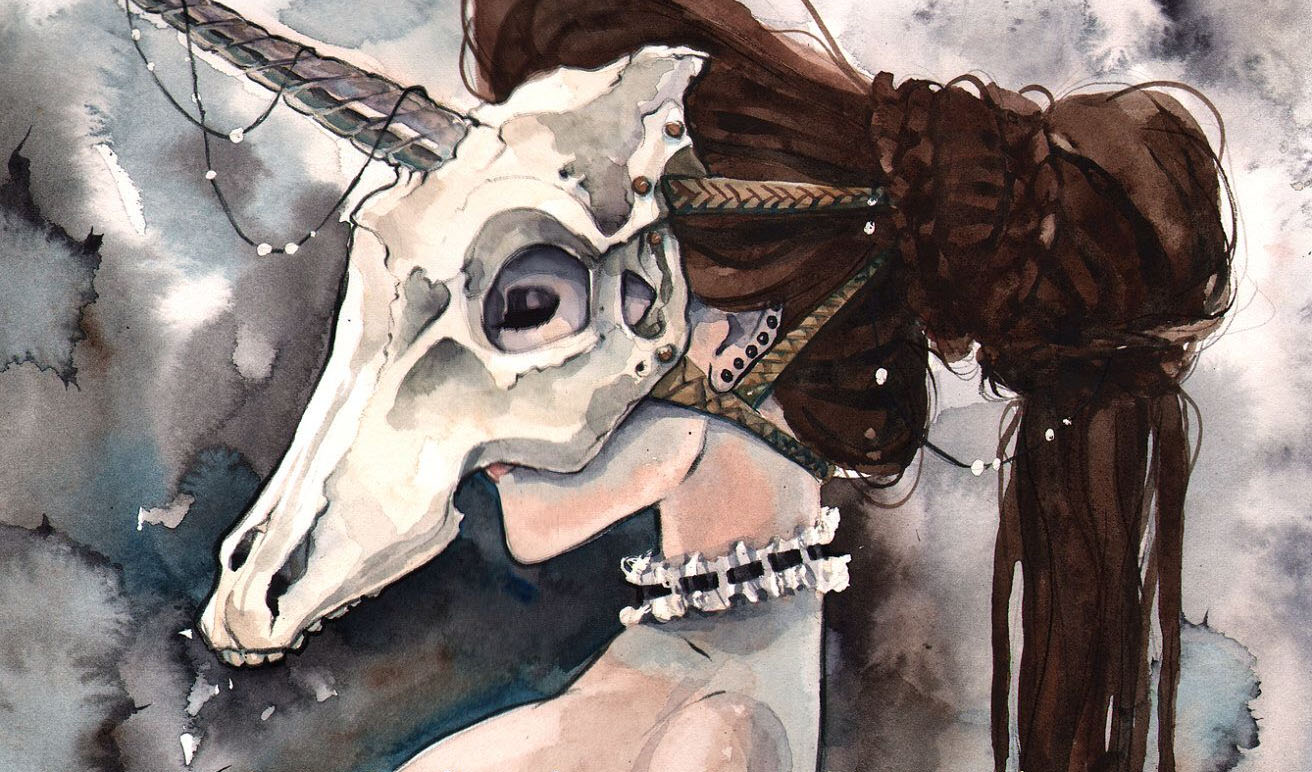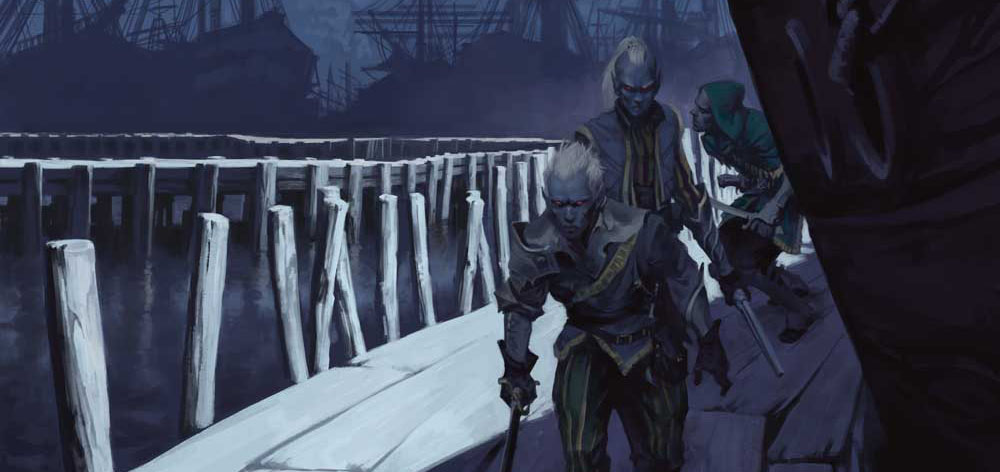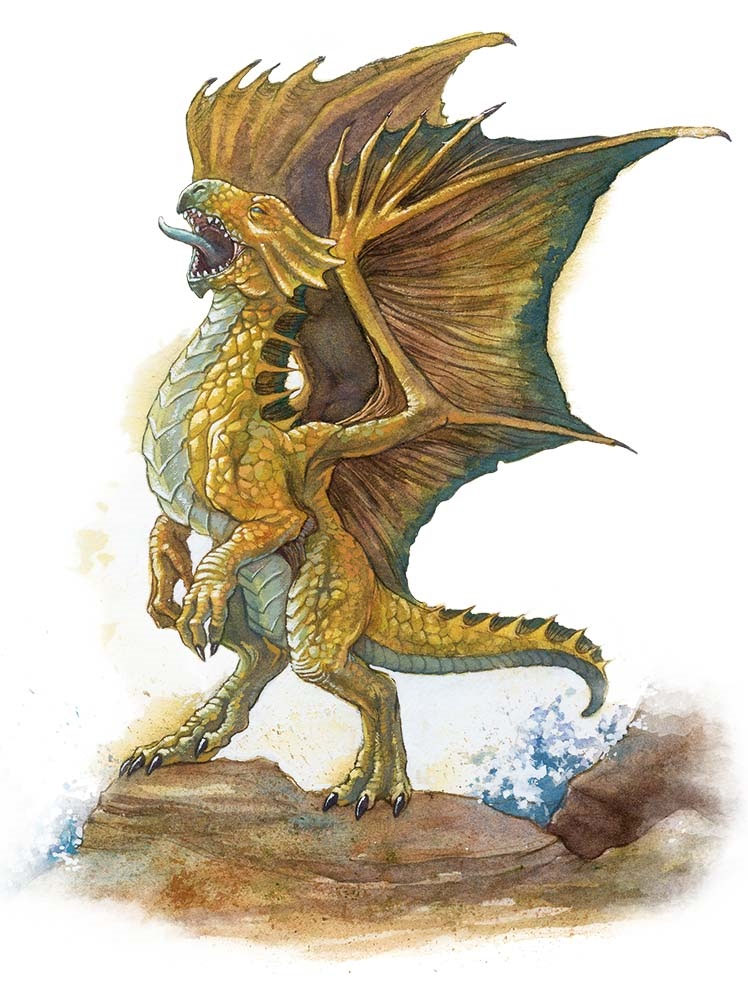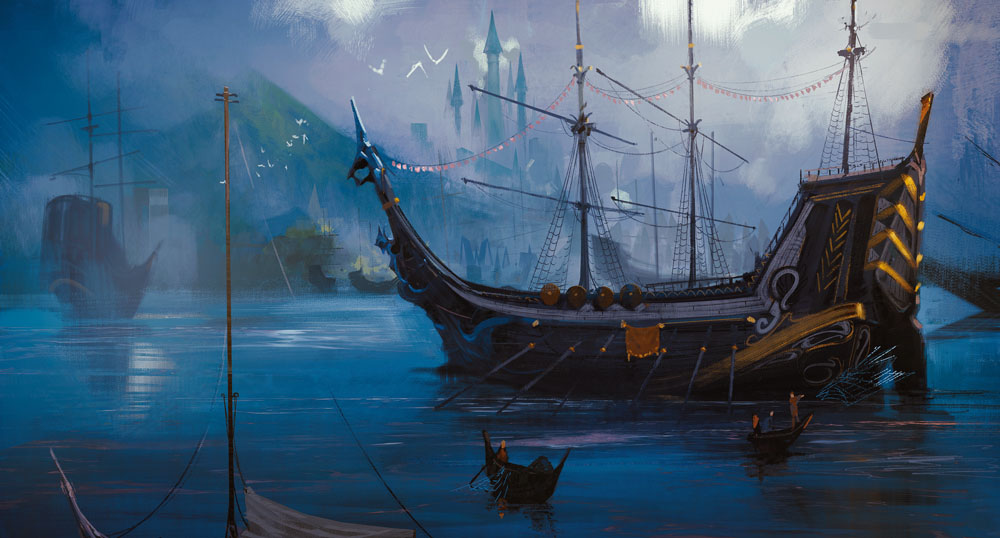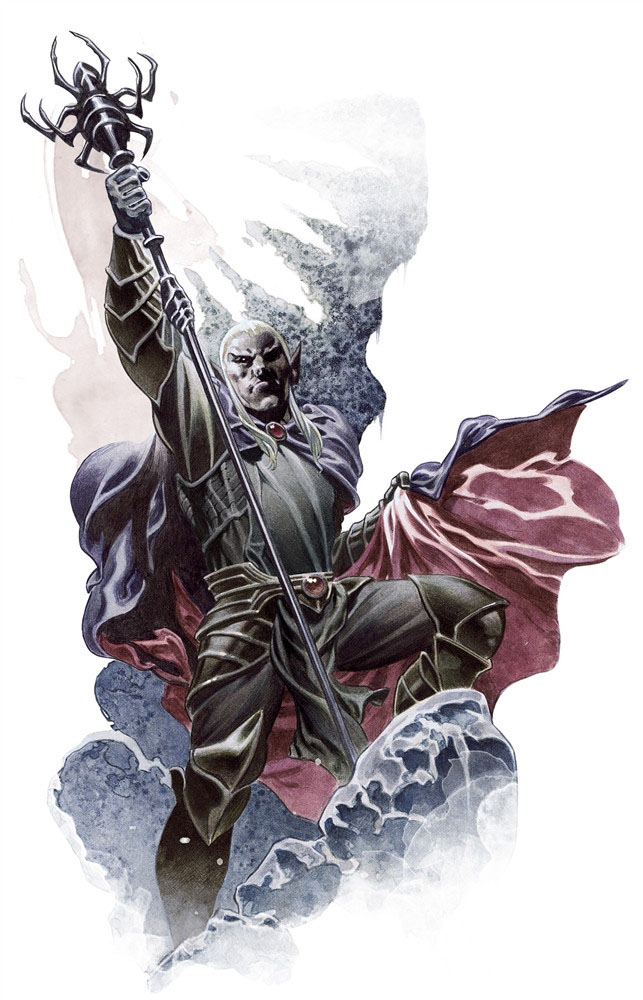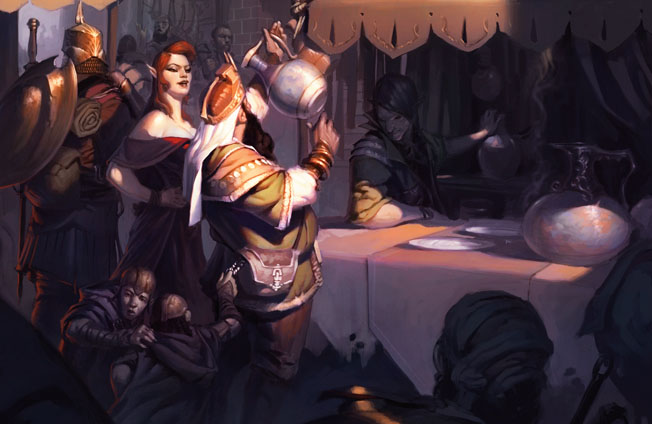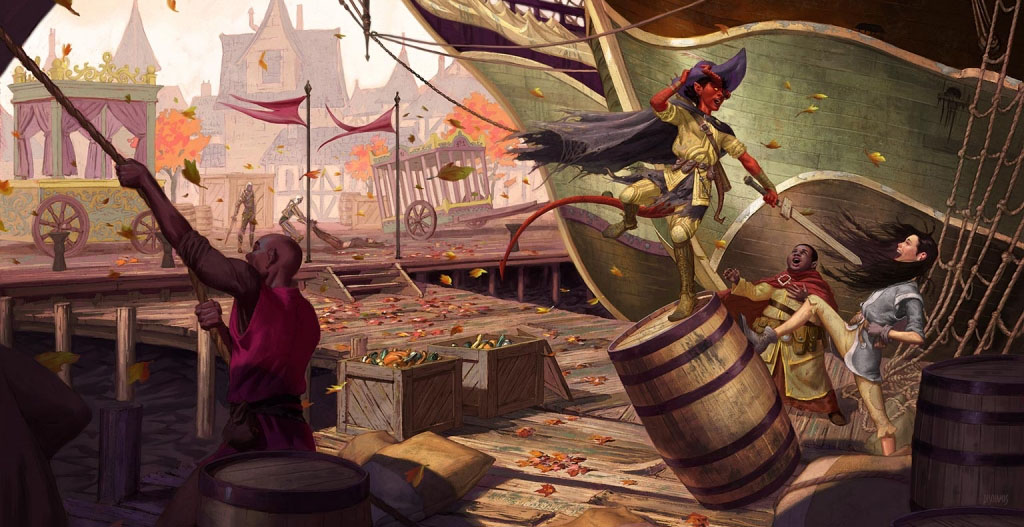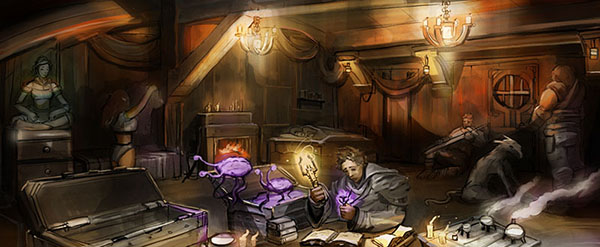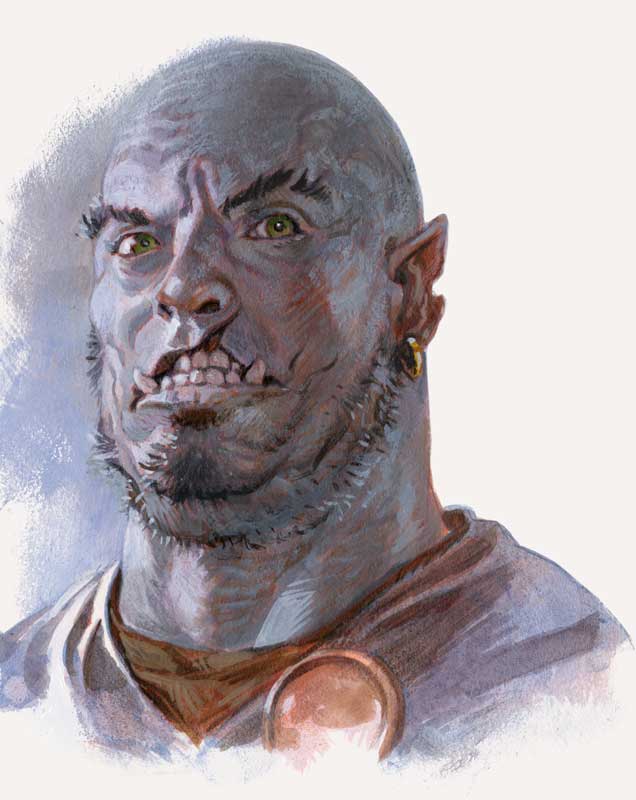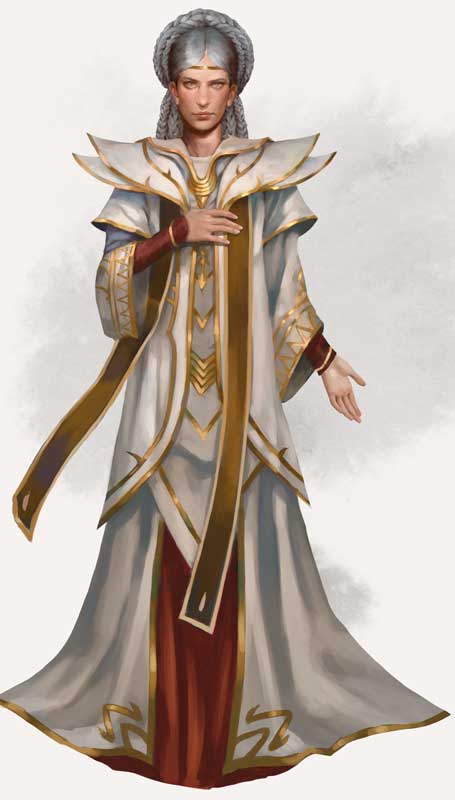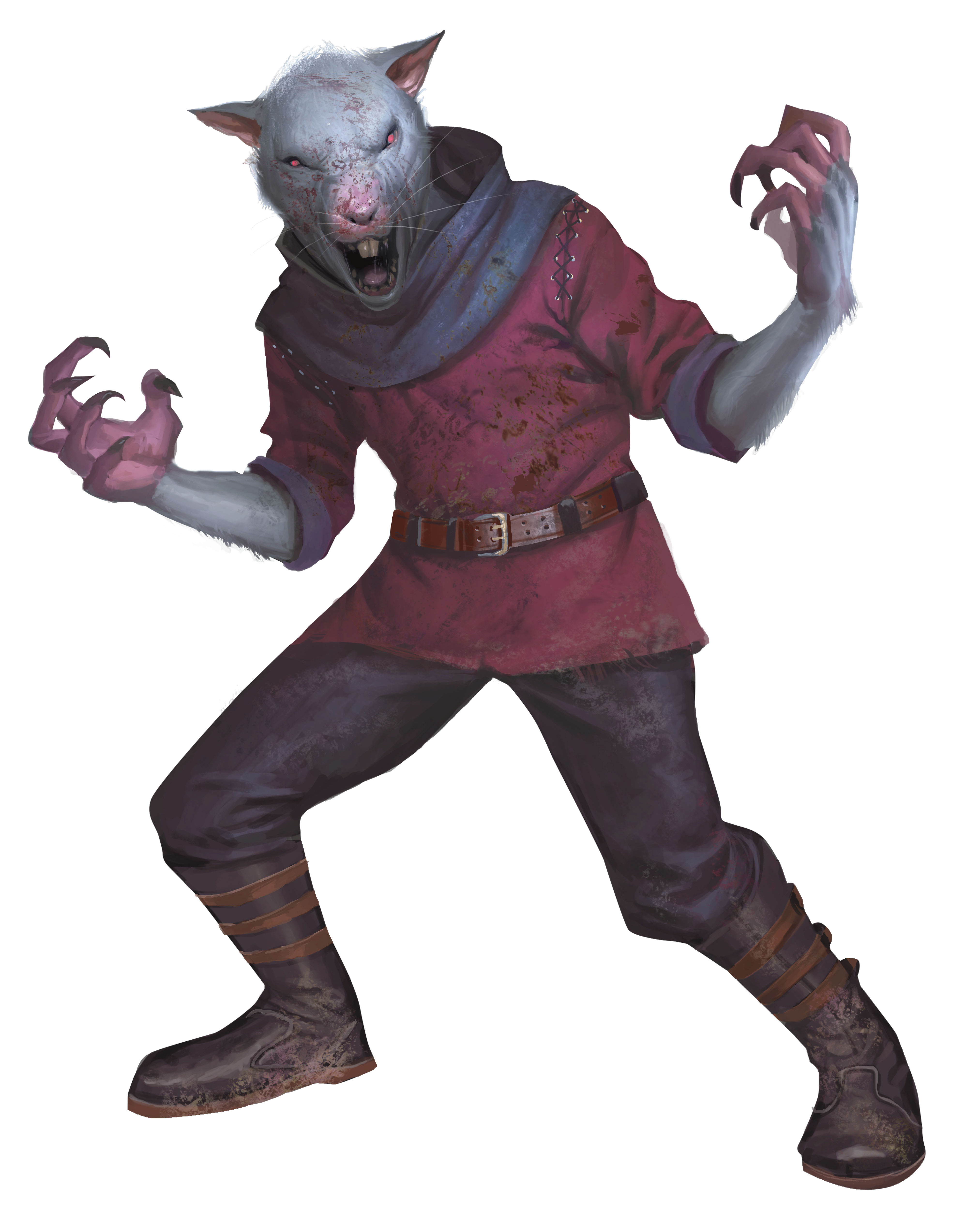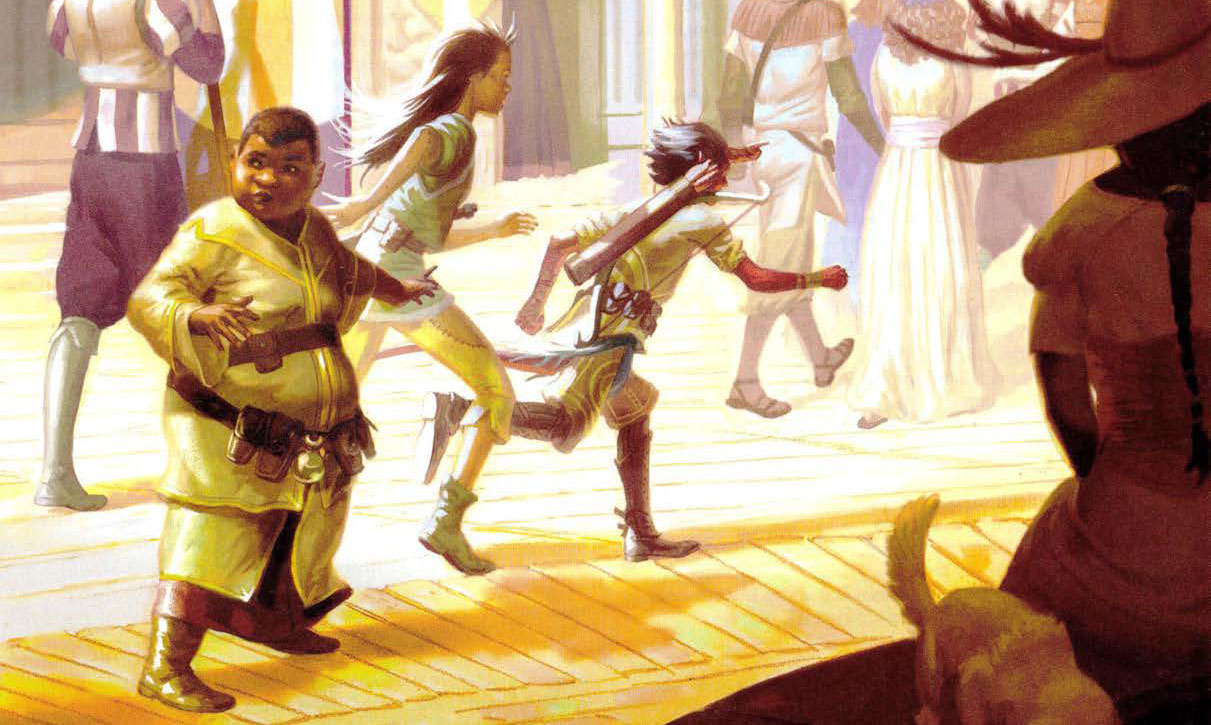As Dragon Heist begins, the Cassalanters control one of the Eyes. (They stole it from the crypt of Lady Alethea Brandath, Renaer’s mother.) If the PCs are working with the Cassalanters, however, it is quite likely that they will have no need of performing a heist to obtain this Eye: If the Cassalanters are kept apprised of the PCs’ progress, they’ll inform them that they possess one of the Eyes and turn it over to them once they’ve secured the other two.
The Cassalanters will want the Stone of Golorr once the PCs have used it to locate the Vault. If the PCs turn it over and later come to regret that action, they may need to carry out a belated heist at a later date.
BLUEPRINT NOTES
As the PCs discovered when renovating Trollskull Manor, nothing gets done without the guilds getting involved. This very much includes the construction of expensive villas by noble families, and many of those guilds will have the original construction on file. (Getting access to them may require some fast-talking, a few well-placed bribes, or perhaps a little mini-heist in its own right.)
Guilds that are likely to have useful plans:
- Carpenters’, Roofers’, and Plasterers’ Guild
- Cellarers’ and Plumbers’ Guild
- Guild of Stonecutters, Masons, Potters, and Tile-makers
- Surveyors’, Map-, and Chart-makers’ Guild
If it would be interesting, feel free to split up the useful plans across multiple guilds: The Stonecutters might have the outer walls and first floor (where detailed carvings were done). The Roofers might have a detailed plan of the upper floor. The cellar might only appear in the records of the Cellarers. And the Surveyors’ might have a very old map of the region showing that there was a sizable underground construction on the site before the Cassalanter Villa was constructed (suggesting the presence of the Temple of Asmodeus without providing any meaningful detail of it).
In preparing blueprints for your players to obtain, I recommend the following alterations:
- The hatch between C22 and C23 was not initially concealed and will likely appear on any blueprints the PCs obtain.
- C28 and C29 were not part of the original construction. They are unlikely to appear on any blueprints the PCs obtain.
- It is quite likely that C27 will be prominently identified as a highly secure VAULT.
EVENT SCHEDULE
CHES 30th – HIGHCOIN BALLS: See surveillance opportunities, below.
TARSAHK 1st – CARAVANCE: During this gift-giving holiday, the Cassalanters give most of their staff the night off. Presents are hidden throughout the house and the Cassalanters celebrate with their children by hunting the presents down. (The Cassalanters are taking one last chance to share joy with their children before possibly losing them forever.)
The only people left in the Villa during this time, beyond the Cassalanters themselves, are:
- The guards
- Willifort Crowell
- The imps guarding Osvaldo Cassalanter
This makes it an excellent opportunity to perform a heist onsite, particularly if the PCs can learn that it’s happening ahead of time from the servants.
Later in the evening, however, after the Cassalanter children go to bed, Asmodean cultists arrive onsite for a ritual in the Temple. (See the Cult Gathering roster below.)
TARSAHK 9th – LEIRUIN FEAST: This is the feast at which the Cassalanters poison 99 guests and perform the ritual necessary to save their children’s’ souls (assuming they’ve managed to secure the gold from the Vault). If they haven’t secured the Vault and are, thus, unable to rescue their children, their plans for this feast are abruptly canceled.
TARSAKH 11th – THE TWINS’ BIRTHDAY: The twins’ ninth birthday, on which Asmodeus will claim their souls.
SURVEILLANCE OPPORTUNITY
The PCs will have an opportunity to observe some of the household’s regular routine when they are first invited to the Villa to hear the Cassalanters’ plea for help. And they may be able to conduct similar surveillance on future meetings with the Cassalanters (which are likely to take place in different areas of the house).
The best general surveillance opportunity, however, is the Highcoin Ball. The house will be swarming with upper class guests, and if the PCs can somehow swing an invitation, join the retinue of someone who has an invitation, or otherwise slip their way in, they’ll be able to get a good sense of the place.
THE VILLA
Area C4 – Reading Room: A black dragon’s head is mounted on the wall as a hunting trophy.
Area C6 – Victoro’s Office: In addition to the normal entry for this room, the Eye is secured in the hidden compartment in Victoro’s desk. The locked drawer also contains a Report from Seffia Naelryke.
- Report from Seffia Naelryke: “Milord—There are fresh eyes everywhere. We had a watcher keeping an eye on the Coachlamp Lane windmill, but I sent a message by way of arrow. They survived, and I think we can be fairly certain they work for Xanathar, as Arn followed them back to Terasse’s house on Elsambul’s Lane. – Seffia Naelryke”
Area C22 – Ammalia’s Private Study: In addition to the normal entry for this room, the desk contains the Cassalanter Report on the Grand Game (see Part 6D).
ADVERSARY ROSTERS
CASSALANTER VILLA
| Willifort Crowelle (75%) or Servant | Area C1 - Entrance Hall | |
| 1 guard | Area C2 - Garden Mudroom | |
| Victoro Cassalanter (01-25%) | Area C4 - Reading Room | |
| 2 guards | Area C4 - Reading Room | |
| Victoro Cassalanter (26-50%) | Area C6 - Victoro's Office | |
| Jandar Chergoba + 6 chefs | Area C10 - Kitchen | |
| Victoro Cassalanter (51-75%) + 1 guard | Area C12 - Smoking Room | |
| Mimic | Area C15 - Banquet Hall | (stationary) |
| Laiba "Nana" Rosse (01-25%) | Area C17 - Playroom | (or with the children) |
| Tissina Khyret | Area C19 - Sitting Room | (attendant to Lady Cassalanter) |
| Victoro (75-90%) + Ammalia (01-25%) | Area C21 - Master Bedroom | |
| Ammalia Cassalanter (26-65%) | Area C22 - Ammalia's Study | |
| Victoro (91-00%) + Ammalia (91-00%) | Area C24- Osvaldo's Prison | |
| 2 imps + Osvaldo Cassalanter | Area C24 - Osvaldo's Prison | (locked up) |
| Ammalia Cassalanter (66-90%) | Area C25 - Butterfly Garden | |
| 4 servants | Guest House | |
TEMPLE OF ASMODEUS (CULT GATHERING)
| 1 bearded devil | Area A3 - Anterior Vestibule | |
| 5 cultists | Area A6 - Secret Vestry | (up to 1 hour before gathering) |
| 3d10 cultists + All Named NPCs | Area A7 - Ceremonial Hall |
MEALTIME:
- Cassalanters are all located in Area C9 (Dining Room).
- 10 servants located in Area C8 (Covered Porch).
THE CHILDREN: Roll 1d6 to determine where Terenzio and Elzerina are. (They are generally accompanied by Nana Rosse, unless she is determined to be in Area C17 on the roster above.)
| 1 | Area C3, playing on sliding ladders. |
| 2 | Area C16, practicing piano. |
| 3 | Area C17, playing with toys while Nana Rosse knits. |
| 4 | Area C18, playing make-believe in costumes (see area description). |
| 5 | Area C25, playing in the garden. |
| 6 | Children are in two different areas; roll again twice ignoring this result. |
STAT REFERENCE
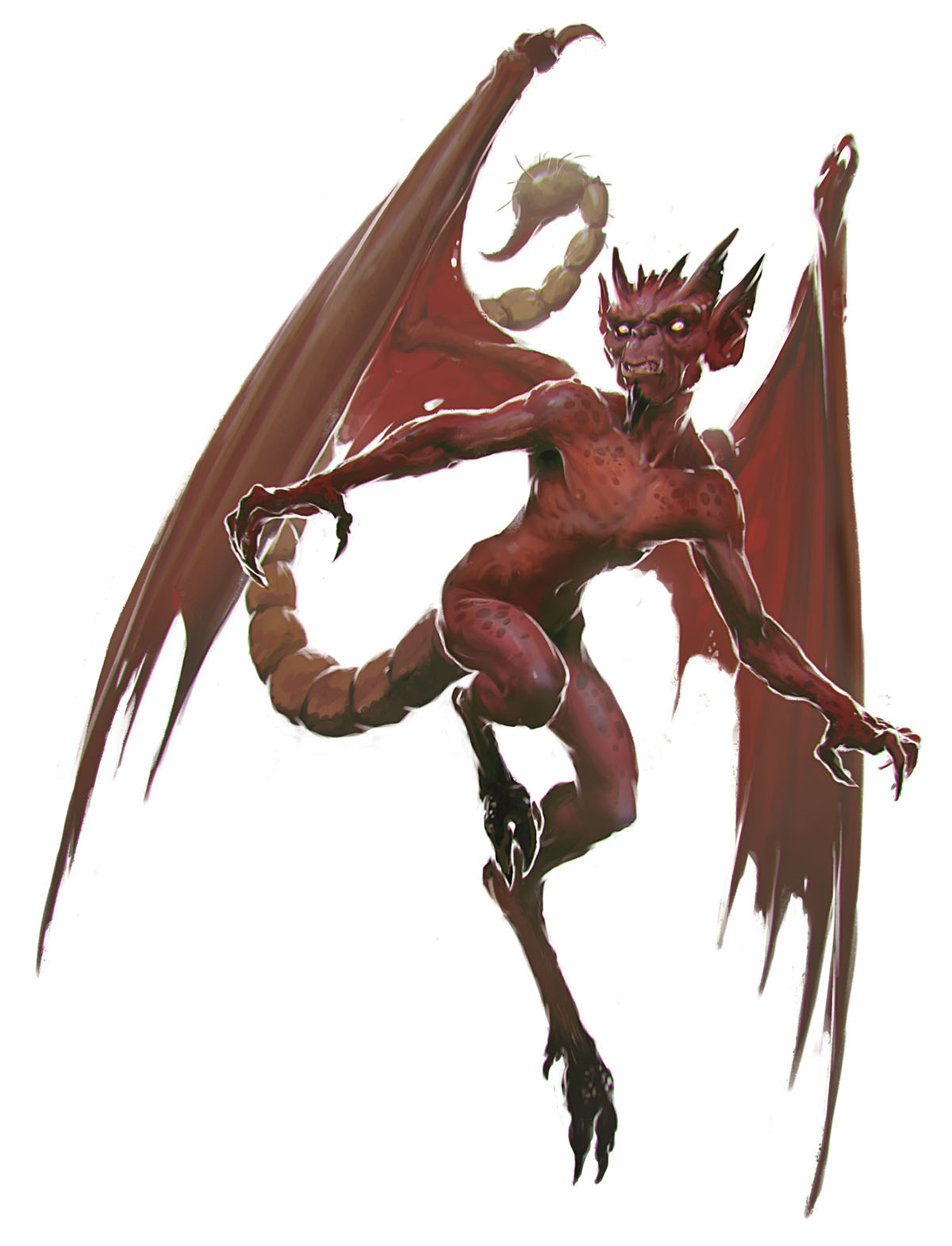 Cooks – commoners, MM p. 345
Cooks – commoners, MM p. 345
Cultists – MM p. 345
Guard – MM p. 347
Servants – commoners, MM p. 345
Imps – MM p. 76
Oslando Cassalanter – chain devil, MM p. 72
Jandar Chergoba (Head Chef) – tiefling cult fanatic, MM p. 345 (DH p. 117)
Laiba “Nana” Rosse (Tutor/Caretaker) – tiefling cult fanatic, MM p. 345 (DH p. 117)
Tissina Khyret (Chief Housemaid) – tiefling cult fanatic, MM p. 345 (DH p. 117)
Willifort Crowelle (Head Butler/Agent) – doppelganger, MM p. 82 (DH p. 116)
Victoro Cassalanter – DH p. 218 (has gold key which opens desk in his office)
Ammalia Cassalanter – DH p. 193
QUESTIONING STAFF
The risk of questioning the Cassalanter’s staff is that there is a 10% chance that they’re asking someone who is a secret member of the cult. Cult members are virtually certain to report the questioning to their masters as soon as possible, and may also mislead PCs by providing false information.
Likely information that can be provided by servants, however, include some subset of:
- A general layout of the areas of the villa they’re familiar with (generally the first three floors).
- Victoro keeps valuables locked in the desk in his office.
- There’s a vault in the basement.
- When working on the third floor once, they heard horrible screams coming from above them on the roof. (GM Note: That was Oslando on a particularly bad day.)
- The servants are periodically asked to gather in one area of the house or another; it’s an open secret that this is done so that the Cassalanters can host secret guests.
- Ammalia is worried sick about her children, although they seem in perfect health.
- They once saw a number of people go down into the wine cellar. They waited around for twenty minutes before Willifort shoed them away, but nobody came back up.
- There’s a secret orgy room under the guest house. (False)

